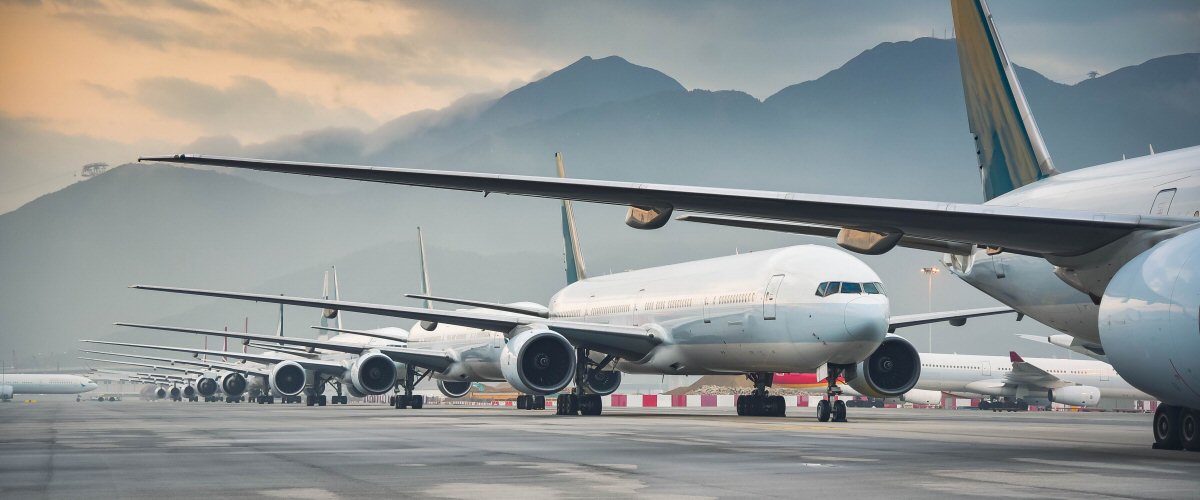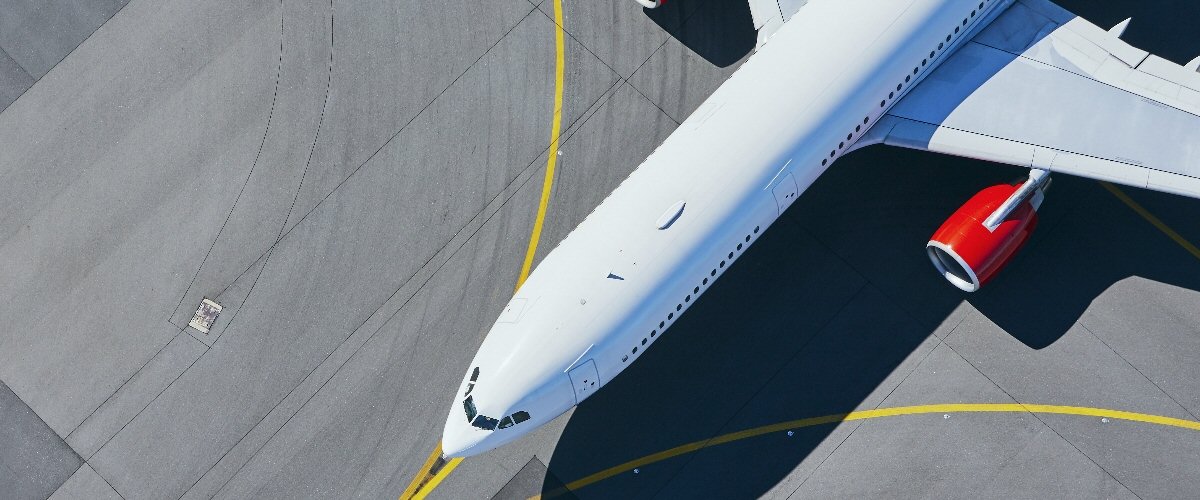Edition 12 | 28th June 2024 Download PDF
.png)
Cargo was in the spotlight more than ever during the pandemic, with airlines such as Qatar and Emirates doubling their cargo revenue, and Cathay Pacific having it become 79% of their total. As passenger traffic has recovered, this has continuously declined. With Federal Express (FedEx) committing to 22 x 757 retirements this week, it is worth recapping the takeaways of IBA’s cargo webinar to note trends and structural changes.
Yield in the pandemic rose as high as 204% of the high of 2018 (2019 missing the usual winter peak), and it has fallen since. Although, it is still at 142% of that level. Interestingly the global cargo tonnage has stayed relatively constant at around 50m tonnes in the last 10 years, showing it is principally a story of supply constraint.
The pandemic prompted a sharp uptick in conversions, with some programmes such as the A330ceo booked up 4-5 years forward. Conversions saw their peak at 204 in 2023 (126 narrowbodies, 58 widebodies and 20 regional jets/turboprops). The rate had been 70-100 a year between 2017 and 2020, however, this year is predicted to be a similar rate to 2021 and 2022 at around 160 or so. This slowdown is perhaps starting to reflect not only the yield drop affecting demand but also how supply constraints are affecting the conversion market. The same A330 programme that is oversubscribed has seen the P2F values increase due to difficulty in sourcing good quality feedstock as well as increased landing gear and engine costs. A330ceos may be back in vogue.
A worthwhile conversation point is also over-storage and utilisation. The beginning of 2022 appears to be a turning point in the global cargo fleet where the active fleet started to steadily decline from circa 80-85% to its current 75% level. As these freight rates drop, the older programmes will be less economical and will be phased out from regular use. In the narrowbody space, there is an oversupply of converted aircraft, however, the passenger market supply chain constraints will limit the feedstock, providing some support.
It is an interesting time to be in the cargo widebody space with both Airbus and Boeing offering a production freighter with the A350F, 777F and 767-300F variants. These present an interesting gamble to cargo airlines since the airframes can be utilised for a greater amount, for more revenue. However, their price tags also make that necessary! Greater adoption of these types could lead to further parking of the current fleet. Relating back to FedEx, the 22 aircraft only represent 5% of their 441 current fleet, so it's not a downturn for them as much as an adjustment. Nonetheless, 86 aircraft (19.5% of the fleet) being parked or stored is not ideal for any carrier.
IBA’s Consulting team have produced a deep-dive report on the cargo market outlook, which is now available to purchase on request. For more information and to download a sample, please click here.
Stu has talked at length about the 4,400 never-built aircraft as a direct result of the pandemic and MAX crisis. One could continue this hypothetical to include the various quality issues and rate restrictions imposed on Boeing, who would otherwise be attempting to catch up with Airbus’s relative romp.
However, IBA’s forecasting highlights that the rate trajectories proposed by both Airbus and Boeing are unsustainable. That is if either OEM would like to maintain steady production growth for the foreseeable future (say, 2040). We knew the widebody rates were unsustainable in 2019 given the order books. We should also question whether a rate of 75+ for Airbus narrowbodies, alongside current 737 rate expectations, tallies with true fleet demand in the 2040+ timeframe.
Airbus is currently targeting a lofty rate of 75 A320s per month (p/m) by 2027 (or the end of 2026). Boeing has delivered 126 737s in 2024 to date, equating to 21 per month. Pre-FAA intervention, Boeing was aiming for 55 p/m in the same timeframe. Now we expect they’d be happy with getting back to the late-30s. Taking these OEM-announced rate targets as inputs to our fleet demand and retirement models (note, not IBA expectations), and then forecasting out to 2040+, our modelling highlights an abrupt flattening of deliveries from 2028 onwards is required. Otherwise, fleet capacity will overshoot demand by a significant margin. Using fleet demand figures published by the OEMs will show a similar outcome.
Shareholders will not be happy with the implications of flat OEM production growth for 15+ years. So, what is happening here?
The most likely outcome is that production rate targets will be pushed out, gradually. Same-old. But there is more to the story. Costs are on an upward trend. Pilots, skilled engineers and technicians are becoming increasingly scarce. The cost of kerosene, with (or without) more sustainable alternatives will be higher and more volatile. This aircraft supply crunch may take years to work its way through, that is indeed, if it will ever do so… OEM shareholder satisfaction could also come from an alternative and not mutually exclusive scenario. The growth from increasing aftermarket business, for example, and under-supply keeping upward pressure on aircraft prices.
We may already be seeing demand responding to high costs and ticket prices, with demand and capacity starting to rebalance in some regions. But what if these trends continue, and how will these cost and demand dynamics affect aviation asset values in the long term? Will economic-traffic regressions have to be redrawn if demand restructures to meet a new supply/demand trajectory? Where are we in the market cycle, truly?
The true elasticity of demand in this uncertain future of supply, demand and costs is of keen interest to IBA, and a focus of our economic, market and ESG teams. Talk to us about it!
European aviation giant Lufthansa Group has announced a new "environmental cost surcharge" of up to €72 per flight to cover the rising costs associated with new green regulatory rules for airlines. This decision comes after a lacklustre response to its green fare options, which saw only 3% of passengers opting for these environmentally friendly tickets in 2023. The surcharge will apply to all tickets issued from June 26, 2024, for departures starting January 1, 2025.
The Lufthansa Group, which includes Austrian Airlines, Swiss, Brussels Airlines, and Eurowings, stated that this surcharge is necessary due to "steadily rising additional costs" from regulatory environmental requirements. These costs include the EU’s new 2% blending quota for Sustainable Aviation Fuel (SAF) starting in 2025, adjustments to the EU Emissions Trading System, and compliance costs with the Carbon Offsetting and Reduction Scheme for International Aviation (CORSIA), all of which our ESG team has covered here.
Despite investing billions in new aircraft and other sustainability measures, Lufthansa insists it cannot absorb the increasing costs from these regulatory requirements alone. This move underscores the financial pressure on airlines to comply with stringent environmental regulations while maintaining competitiveness.
Furthermore, this is all against the backdrop of low-cost airlines criticising the European Commission's plans to exempt long-haul flights from rules on monitoring non-CO2 emissions until 2027. easyJet, Ryanair and Wizz Air have united in saying that international flights account for a significant portion of aviation’s carbon emissions and operate in regions where contrail formations are most harmful. They argue that this exemption undermines the EU's environmental goals and already gives an unfair advantage to long-haul carriers.
French advisory firm Estuaire estimates that 65% of contrail impact will go unmonitored due to this exemption. The overall impact of aviation, including non-CO2 emissions like nitrogen oxides and contrail-cirrus clouds, is estimated to be up to four times greater than CO2 alone. However, these emissions are not currently accounted for in pricing.
The decision has led to questions about the influence of lobbying from European airlines and the adequacy of scientific data on contrails. There is also speculation about whether the EU Commission is aligning this decision with plans for the EU Emissions Trading System (ETS) and CORSIA, which could impose stricter compliance costs on outbound flights from 2026. Lufthansa’s sharp reaction has sparked a debate regarding the actual costs of the green transition, and how many airlines will follow suit.
Our regular update looks at the key trends and market indicators using data and analytics provided by IBA Insight.


.png)

IBAのワンストップ航空インテリジェンスプラットフォームであるIBA Insightを紹介します。IBAの広範なフリート、価値、市場データと飛行データ、専門家の意見とを組み合わせ、投資、リスクプロファイリング、航空機ポートフォリオの監視に大きな自信と保証を提供します。

受賞歴のあるISTAT認定鑑定士の大規模なチームと 30年以上にわたる独自のデータを活用しているIBAは、価値評価市場のリーダーです。グローバルに活動し、航空機、エンジン、ヘリコプター、貨物機、航空貨物、発着枠、スペアなど、さまざまな資産の価値について、独立した公平な意見とアドバイスを提供しています。お客様の期待を超えるように常に努力しており、IBAの客観的な判断は、融資、資産の回収、商業開発、転売に必要な保証をサポートします。

IBAは、世界中の大手航空機・エンジンリース会社と協力しています。当社の業界知識の深さは、専門家としてのアドバイスにも反映されているので、投資サイクルを通じてお客様をサポートし、お客様の旅のあらゆる段階で自信を与えています。評価、フリートの選定、ポートフォリオ開発からリース終了時の引渡、転売まで、リース期間中のあらゆるリスク評価と資産管理活動において、お客様をサポートします。

航空投資は複雑な問題を抱えていることがあり、多額の金銭的な利害関係が絡んでいるため、運に任せることはできません。初めて投資をされる方でも、市場で実績のある方でも、IBAは資産クラスの複雑さを切り開き、投資機会をよりよく理解するためのお手伝いをいたします。お客様と協力し、ポートフォリオの開発、多様化をサポートし、戦略的なニーズを充足いたします。

IBAは30年以上にわたり、世界的な航空会社や地域の航空会社と協力して、評価やアドバイザリーサービス、航空データインテリジェンス、航空機やエンジンの引渡におけるサポートを提供してきました。世界中の様々な航空プロジェクトに協力して取り組み、クライアントのさらなるリソースの要件を満たし、必要な時にはいつでもどこでもプロジェクト管理のサポートを提供しています。

当社は、訴訟支援と紛争解決に臨機応変なアプローチをとり、クライアントの法的戦略に合わせた思慮深い解決策を見出しています。30年以上にわたる独自の航空データへのアクセス、戦略的M&Aへの定期的な関与、および航空機管理の専門知識により、当事者間の典型的な争点となっている分野に定期的にアクセスできます。IBAは、航空機の損傷や損失に対する保険関連の和解から、貸手と借手の間の紛争、多くの場合、引渡時の紛争に至るまで、様々な側面からクライアントを直接、または法務チームを通じて支援します。